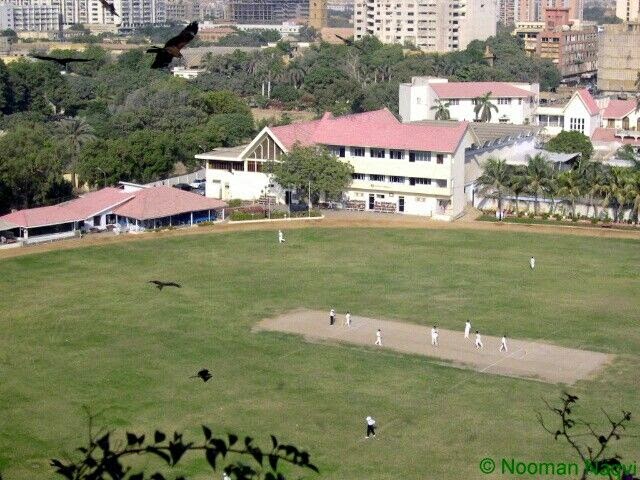Great Bath and Granary, SD Area
The Great Bath is situated along a north-south street with a drain covered with limestone blocks. In the background is the so-called Granary, while in the foreground are the walls of several domestic structures.
Great Bath and Granary, SD Area, looking west from the
stupa mound
The great bath surrounded by a brick colonnade, measures approximately 12
meters north-south and 7 meters wide, with a maximum depth of 2.4 meters.
In the background is a massive brick structure with narrow passages that was
first identified as a hammam or hot-air bath, and later as the state
granary.
|
|
Great Bath, SD Area, looking north
The Great Bath was entered using two wide staircases, one from the north and
one from the south. The floor of the tank is watertight due to finely fitted bricks
laid on edge with gypsum plaster. Brick colonnades were discovered on the eastern,
northern and southern edges, but the western edge (at the left) was missing.
Sir John Marshall assumed that they would have been present and subsequent
reconstructions have replaced these missing columns.
Lower ledge inside the Great Bath, SD Area, southern edge, looking east
|
|
At the foot of the stairs is a small ledge with a brick edging that extends the
entire width of the pool. People coming down the stairs could move along
this ledge without actually stepping into the pool itself. Small sockets at the
edges of the stairs could have held wooden planks or treads.
Great Bath, SD Area, looking north
The side walls of the tank were constructed with finely fitted bricks and a
thick layer of bitumen (natural tar) was laid along the sides of the tank to
keep water from seeping through the walls and up into the superstructure.
|
|

Great Bath, SD Area, looking north
The tank would have been open to the sky, but the surrounding structures would
have been roofed. The sidewalls and parts of the floor have been conserved using
modern replica bricks. The original eroded wall and corner are visible on the left
and center. The colonnades around the tank have also been reconstructed.
Lower ledge and Drain outlet, Great Bath, SD Area,
looking west
At the southwestern corner of the sloping floor, a small drain first passes
through the massive walls of the tank and connects to a corbelled arch
drain that curves along the edge of the northern terrace of the granary to the west.
Great Bath, SD Area
The floor slopes down to the southwest corner where a small outlet (top right)
leads to a brick drain, which takes the water to the edge of the mound.
Corbelled Drain exiting the Great Bath
|
|
|
|
This drain cuts through the edge of the so-called granary. If the entire drain
were constructed along with the Great Bath, this feature would indicate that
the original "granary" was built before the great bath.
Looking out from inside the drain
|
|
The corbelled arch drain from the great bath is large enough to walk into.
It has a small ledge on either side of the actual drain channel.
|
|


















